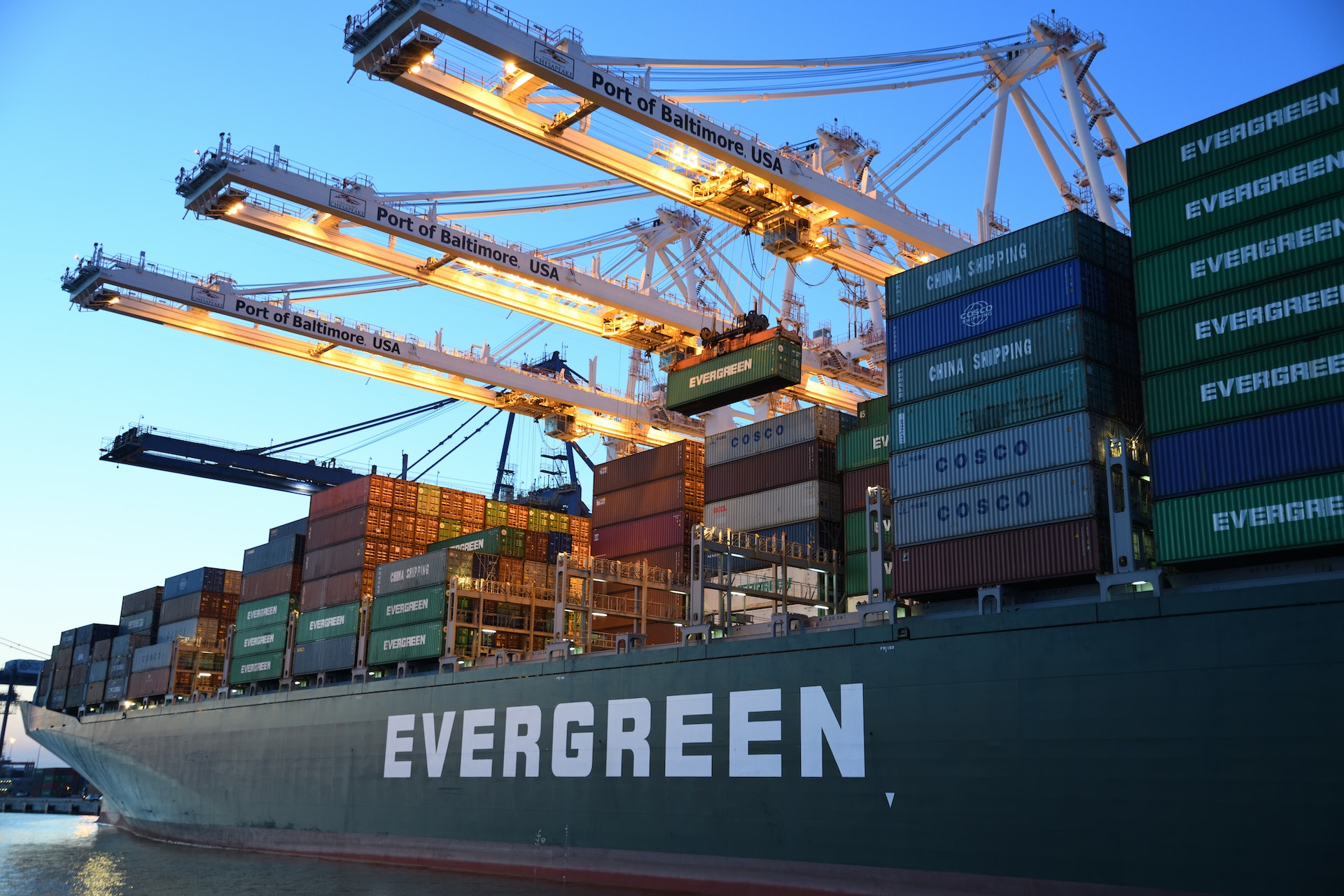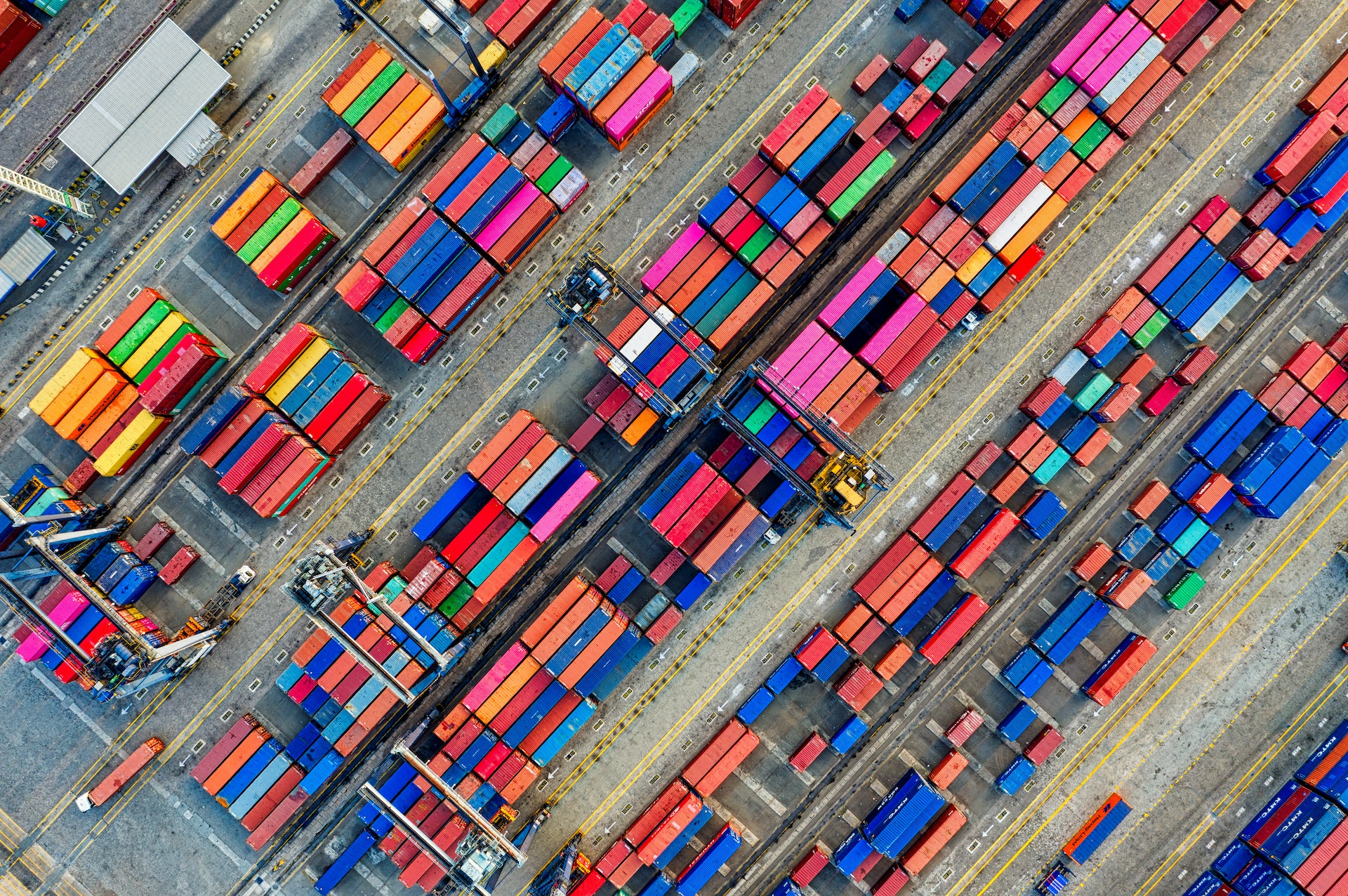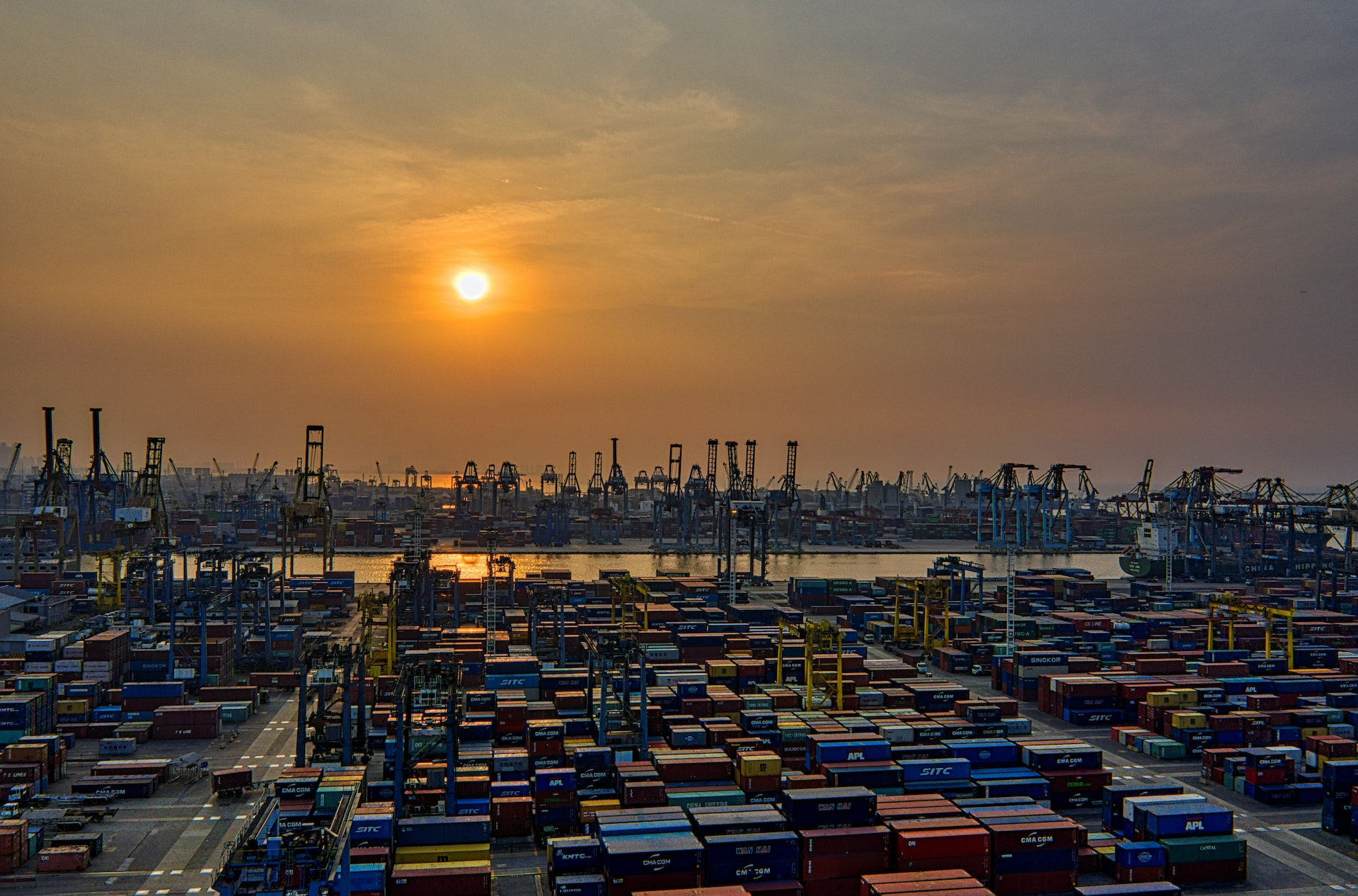The Economic Impact of Shipping Containers in Global Trade and Logistics

Shipping Containers in Global Trade and Logistics
Shipping containers have played a pivotal role in global trade and logistics, revolutionising the shipping industry and transforming the way goods are transported worldwide. This article examines the economic significance of shipping containers, focusing on how standardised containerisation has reduced costs and enhanced efficiency in the transportation of goods on a global scale.

Standardisation and Intermodal Efficiency
The standardisation of shipping containers has had a profound impact on the efficiency of global trade, primarily by enabling seamless intermodal transportation. Containers are designed with uniform dimensions and specifications, allowing them to fit onto various modes of transportation, including ships, trucks, and trains, without the need for repacking or transferring goods between different types of containers.
This standardised approach has significantly reduced the time and labor required for cargo handling and transfer, revolutionising the logistics process. Previously, goods had to be loaded and unloaded individually or packed into different types of containers depending on the mode of transport. This process was not only time-consuming but also prone to errors and delays, leading to increased costs and potential damage to the cargo.
With standardized shipping containers, the loading and unloading process has become more streamlined and efficient. Containers can be easily moved from one mode of transportation to another, such as from a truck to a ship or a train, without the need for repacking. This eliminates the need for manual handling of individual items, reducing the risk of damage and improving overall cargo security.
The standardisation of shipping containers also simplifies the documentation and paperwork associated with transportation. Containerisation allows for better tracking and tracing of shipments, ensuring transparency and visibility throughout the entire supply chain. This level of control and monitoring helps minimise delays, improves planning, and enables faster response times in case of any logistical issues.
Moreover, the use of standardised containers has led to the development of specialised container handling equipment and infrastructure at ports and terminals worldwide. Cranes, forklifts, and other machinery are designed to efficiently handle containers, further speeding up the loading and unloading processes. This investment in container handling equipment has transformed ports into highly efficient hubs, capable of accommodating large volumes of containerised cargo.
The reduced time and labor required for cargo handling and transfer due to containerisation have led to faster and more reliable transportation. Goods can now move seamlessly from the production site to the consumer, minimising transit times and ensuring timely delivery. This efficiency has benefited businesses by reducing inventory holding costs, improving customer satisfaction, and facilitating just-in-time manufacturing and supply chain practices.
In summary, the standardised nature of shipping containers has revolutionised global trade by enabling seamless intermodal transportation. By eliminating the need for repacking and streamlining cargo handling processes, containerisation has significantly reduced time, labor, and costs associated with transportation. This has resulted in faster and more reliable delivery of goods, improved supply chain management, and enhanced overall efficiency in global logistics operations.
Reduced Costs
Containerisation has revolutionised the field of global trade and logistics by bringing about a profound transformation in cost reduction. In the pre-containerisation era, the loading and unloading of goods were predominantly carried out manually, resulting in exorbitant labor expenses and an elevated risk of damage to the cargo. However, with the advent of shipping containers, a paradigm shift occurred as the entire process became automated, leading to a substantial decrease in labor costs and a significant reduction in the likelihood of mishandling goods.
The introduction of standardised shipping containers brought immense benefits to the global trade industry. These containers are designed to be easily loaded and unloaded from various modes of transportation, such as ships, trains, and trucks. By employing standardised container sizes and specifications, the handling of goods became much more streamlined and efficient. This standardisation facilitated the seamless transfer of containers from one transport vessel to another, ensuring a smooth flow of goods across different stages of the supply chain.
One of the key advantages of containerization is its ability to optimize the use of transportation infrastructure. Shipping containers are designed to fit snugly onto vessels, railcars, and trucks, allowing for maximum space utilization. This optimization of space not only enables larger quantities of goods to be transported in a single shipment but also reduces the number of trips required to move the same volume of cargo. As a result, containerization has led to increased operational efficiency and cost savings for shipping companies and logistics providers.
Moreover, the efficient use of containerised transport has contributed to a significant reduction in fuel consumption. By minimising the need for multiple handling processes and optimising cargo capacity, containerisation has reduced the overall energy requirements for global trade and logistics operations. This reduction in fuel consumption not only translates into cost savings but also has positive environmental implications, such as decreased greenhouse gas emissions and a smaller carbon footprint.
In summary, containerisation has had a transformative impact on reducing costs associated with global trade and logistics. Through the automation of loading and unloading processes, it has minimised labor expenses and mitigated the risk of cargo damage. Additionally, containerisation’s standardisation and optimisation of transportation infrastructure have improved operational efficiency and reduced fuel consumption. As a result, containerisation continues to play a vital role in making international trade more cost-effective, reliable, and sustainable.
Improved Supply Chain Management
The widespread adoption of containerisation has brought about significant enhancements to supply chain management practices. One of the key benefits is the ability for companies to easily track and monitor their shipments throughout the entire supply chain journey. By utilising container tracking technologies, such as GPS and RFID systems, companies can obtain real-time visibility into the location and status of their containers. This level of visibility enables better inventory management by providing accurate information on the whereabouts of goods, allowing companies to optimize their stock levels and respond promptly to any disruptions or delays.
The increased transparency offered by containerisation has revolutionised planning processes within the supply chain. With access to real-time data on container movements, companies can make more informed decisions regarding production schedules, transportation routes, and distribution strategies. This improved planning capability helps to streamline operations, minimise lead times, and optimize inventory levels. As a result, companies can better align their supply with demand, reducing the occurrence of stock outs and improving overall customer satisfaction.
Furthermore, containerisation has contributed to enhanced overall supply chain efficiency. The standardised nature of shipping containers ensures compatibility with various modes of transportation, enabling seamless intermodal transfers. This smooth transition between different transport vessels minimises handling time and reduces the risk of delays or disruptions. Consequently, supply chain processes become more streamlined, allowing for faster and more reliable delivery of goods to the end customers.
Another advantage of containerization in supply chain management is the facilitation of containerization-friendly infrastructure. Ports, terminals, and transportation networks have adapted to accommodate the efficient handling and movement of containers. Dedicated container yards, specialized cranes, and advanced container handling equipment have been developed to support the smooth flow of containers within the supply chain. These infrastructure improvements further enhance operational efficiency, reduce congestion, and enable faster turnaround times for shipments.
In summary, the adoption of containerisation has significantly enhanced supply chain management practices. Through real-time tracking and monitoring capabilities, companies can achieve improved visibility and better inventory management. This increased transparency leads to more effective planning, reduced stock outs, and overall supply chain efficiency. Additionally, containerisation-friendly infrastructure supports the seamless movement of containers, enabling faster and more reliable delivery of goods. As a result, containerisation continues to play a crucial role in optimising supply chain operations and driving business success.
Increased Trade Volume
Containerisation has played a pivotal role in fostering a remarkable expansion of global trade volume. The standardisation of shipping containers has revolutionised the international trade landscape by simplifying and optimising logistics processes. This, in turn, has significantly reduced barriers to entry for businesses, enabling them to participate more easily and efficiently in the global marketplace.
The standardised nature of shipping containers has provided businesses with a common language for transporting goods across borders. By adhering to universally recognised container sizes, specifications, and handling procedures, companies can seamlessly integrate their supply chains into the global trade network. This standardisation eliminates the need for time-consuming and costly modifications to packaging and cargo handling practices when goods are transported internationally. As a result, businesses of all sizes, including small and medium enterprises, can now access global markets with greater ease and confidence.
The ease of using shipping containers has streamlined the logistics processes involved in international trade. Containers can be loaded with goods at the point of origin, securely sealed, and then transported via multiple modes of transportation, such as ships, trains, and trucks, without the need for constant unpacking and repacking. This seamless transfer of goods from one transportation mode to another has reduced transit times, minimised handling risks, and ensured the integrity and security of the cargo throughout the journey. Consequently, businesses can transport goods more efficiently and cost-effectively across borders, leading to increased trade volumes.
Moreover, containerisation has facilitated the development of more efficient transportation networks and infrastructure to support global trade. Ports and terminals have adapted to accommodate the handling and storage of containers, with specialised equipment and streamlined processes. This has resulted in faster turnaround times for ships, reduced congestion at ports, and improved overall efficiency in the movement of goods. In addition, containerisation has spurred the growth of intermodal transportation, where containers seamlessly transition between different modes of transport, further enhancing the speed and efficiency of global trade.
The cost-effectiveness of containerisation has also played a significant role in boosting global trade volume. By optimising cargo space and reducing the need for additional packaging and handling, containerisation has lowered transportation costs. Companies can now transport larger quantities of goods in a single container, benefiting from economies of scale and reducing per-unit transportation costs. This cost savings has made international trade more accessible and profitable, encouraging businesses to engage in cross-border transactions and contributing to the overall increase in global trade volume.
In summary, containerisation has been instrumental in facilitating a substantial growth in global trade volume. The standardised nature of shipping containers has reduced barriers to entry, simplified logistics processes, and enabled businesses to participate more easily in international trade. The streamlined handling and transportation of goods in containers have improved efficiency, reduced transit times, and lowered costs. As a result, businesses can engage in global commerce more efficiently and profitably, driving the expansion of trade volumes and fostering economic development worldwide.
Port Development and Infrastructure
The widespread adoption of containerisation has acted as a catalyst for the development of modern port facilities around the world. Ports have undergone significant transformations to accommodate larger container ships, implement efficient cargo handling systems, and expand storage capacities, all driven by the growing demand and economic benefits associated with increased trade volume and container traffic.
To accommodate larger container ships, ports have undertaken extensive infrastructure upgrades. Deepening and widening of harbor channels and berths have been carried out to accommodate vessels with greater draft and size. This allows for the entry of mega-container ships, which can carry a massive number of containers. The construction of larger and more advanced container terminals has also been undertaken, featuring state-of-the-art container cranes, automated container handling systems, and improved berth and quay structures. These advancements enable efficient loading and unloading of containers, reducing turnaround times and increasing overall port capacity.
Efficiency in cargo handling has become a crucial focus for modern port facilities. Ports have implemented advanced technologies, such as automated container handling equipment, computerised inventory management systems, and integrated logistics platforms. These technologies streamline cargo operations, improve productivity, and enhance the accuracy of container tracking and management. Efficient cargo handling not only increases the throughput of containers but also minimises operational costs and reduces congestion within the port, ensuring smooth and timely movement of goods.
In response to the growing demand for container storage, ports have expanded their storage capacities. Large container yards and stacking areas have been constructed to accommodate the increasing volume of containers awaiting pickup or transshipment. This expansion enables ports to handle higher container traffic and cater to the needs of shipping lines, freight forwarders, and logistics providers. Adequate storage facilities also contribute to more efficient container movement and reduce the risk of delays or bottlenecks in the supply chain.
The economic benefits derived from increased trade volume and container traffic have spurred substantial investments in port infrastructure. Governments, private investors, and port authorities recognise the potential for economic growth and job creation associated with vibrant port activities. As a result, significant investments have been made in port expansion projects, including the construction of new terminals, infrastructure upgrades, and the development of transport and logistics networks surrounding the ports. These investments not only enhance the port’s capacity and capabilities but also generate employment opportunities, attract business investments, and stimulate economic growth in the port cities and surrounding regions.
Furthermore, the development of modern port facilities has a multiplier effect on the local economy. The presence of efficient port infrastructure attracts various industries and businesses related to shipping, logistics, warehousing, and manufacturing. These industries generate employment, contribute to local tax revenues, and stimulate related sectors such as hospitality, retail, and transportation. The growth of port cities as vibrant economic hubs creates a ripple effect, driving economic development and improving the overall standard of living in the region.
In summary, containerisation has stimulated the development of modern port facilities worldwide. Ports have adapted to accommodate larger container ships, implemented efficient cargo handling systems, and expanded storage capacities to meet the growing demand. The economic benefits of increased trade volume and container traffic have led to substantial investments in port infrastructure, creating employment opportunities and stimulating economic growth in port cities and their surrounding regions. The continued growth of containerisation and global trade will likely lead to further advancements and expansion of port facilities in the future.
Globalisation and Supply Chain Integration
The widespread adoption of containerisation has been a major driving force behind the acceleration of globalisation and the integration of supply chains on a global scale. Containerisation has provided businesses with the tools and capabilities to establish international production networks and engage in just-in-time manufacturing, leading to numerous benefits in terms of cost advantages, market access, and enhanced competitiveness.
Containerisation has facilitated the establishment of international production networks by enabling the seamless transportation of components and finished goods across countries and continents. Companies can now source raw materials, components, and products from various locations around the world, taking advantage of specialised manufacturing capabilities, lower labor costs, or access to specific resources. By creating intricate supply chains that span multiple countries, businesses can leverage the strengths of different regions and achieve greater efficiency and cost-effectiveness in their production processes.
The integration of supply chains through containerisation has also enabled the practice of just-in-time manufacturing. Just-in-time manufacturing emphasises the delivery of components and goods precisely when they are needed in the production process, minimising inventory holding costs and reducing lead times. Containers play a vital role in supporting just-in-time manufacturing by providing a reliable and efficient means of transporting goods in a timely manner. With the ability to transport containers seamlessly across borders, businesses can ensure that production lines are supplied with the necessary components and materials precisely when they are required, optimising efficiency and reducing waste.
The integration of supply chains through containerisation has unlocked cost advantages for businesses. By establishing international production networks, companies can take advantage of lower production costs in different regions, such as lower labor costs, access to specialised expertise, or economies of scale. The ability to transport goods in standardised containers has made it easier and more cost-effective to tap into these cost advantages. Additionally, the streamlining of logistics processes, reduced handling, and minimised risks of damage associated with containerisation contribute to overall cost savings within the supply chain.
Containerisation has also facilitated access to global markets for businesses. By transporting goods in standardised containers, companies can reach distant markets more efficiently and reliably. Shipping containers provide a secure and standardised means of transporting goods, ensuring that products arrive at their destination in good condition. This reliability and ease of transport have opened up new market opportunities for businesses, allowing them to expand their customer base and access previously untapped regions. The ability to penetrate global markets contributes to revenue growth and business expansion.
Furthermore, the integration of supply chains through containerisation has strengthened the competitiveness of businesses. By leveraging international production networks, companies can optimize their operations, reduce costs, and enhance their ability to respond to market demands quickly. The streamlined logistics processes enabled by containerisation contribute to improved agility, flexibility, and responsiveness within the supply chain. This enhanced competitiveness allows businesses to adapt to changing market conditions, meet customer expectations, and gain a competitive edge in the global marketplace.
In summary, containerisation has played a vital role in accelerating globalisation and supply chain integration. It has enabled businesses to establish international production networks and engage in just-in-time manufacturing, leveraging cost advantages, accessing global markets, and strengthening competitiveness. The adoption of containerisation has transformed the way businesses operate, fostering greater interconnectivity and integration on a global scale. As containerisation continues to evolve and expand, it is expected to further drive the process of globalisation and shape the future of supply chain management.

Conclusion: Shipping Containers
Standardised containerisation has transformed the shipping industry, delivering significant economic benefits to global trade and logistics. Through improved efficiency, reduced costs, and enhanced supply chain management, shipping containers have played a pivotal role in facilitating the growth of international commerce, stimulating port development, and fostering globalisation. As the backbone of modern logistics, shipping containers continue to shape and drive the interconnected global economy.

One Comment